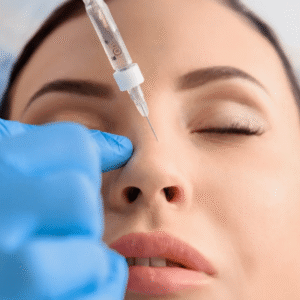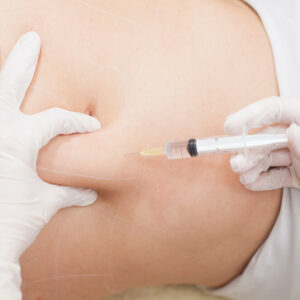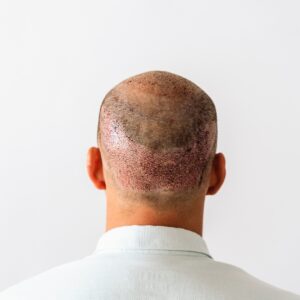Nasal passages and sinuses play a crucial role in breathing, filtering air, and protecting us from infections. When these areas become inflamed or blocked, our comfort and health can suffer. This blog delves into the use of nasal spray and sinus rinse to maintain nasal hygiene, reduce congestion, and support healthy breathing. We’ll also highlight how parents can safely use kids nasal spray while exploring adult counterparts. This is an informational guide—with no product promotion—that emphasizes best practices and evidence-based tips.
- Nasal Physiology and the Role of Nasal Hygiene
- Nasal lining and mucus function: These membranes filter pathogens and humidify air. Mucus and cilia trap particles and help move them into the throat.
- Normal drainage: In a healthy system, mucus drains unobtrusively. When this drainage becomes sluggish, an imbalance results—leading to symptoms such as congestion, pressure, or postnasal drip.
- Sinus involvement: The sinuses are air-filled cavities that rely on clear drainage through narrow channels. Obstruction can lead to sinus pressure or infection.
Thorough nasal hygiene supports this natural function, enhancing respiratory comfort.
- Nasal Spray: Purpose, Types, and Usage
- What Is Nasal Spray?
A nasal spray is a liquid solution designed to deliver moisture, saline, or medication directly into the nasal passages. It can provide rapid relief and improve drainage.
- Types of Nasal Sprays
- Saline sprays – A simple saltwater solution to moisturize and thin mucus without medication.
- Isotonic vs. hypertonic saline – Isotonic (0.9%) matches body fluid; hypertonic (1.5–3%) draws out excess fluid, useful in congestion.
- Prescription sprays – Contain medication like corticosteroids to reduce inflammation in chronic sinusitis or allergies. (Note: use under medical guidance.)
- General Usage Guidelines
- Shake as directed.
- Tilt head forward; do not sniff hard.
- Spray gently while breathing normally, aiming toward the outer cheek.
- Wipe the tip, recap, and discard after recommended time.
- For children under 6, administer while they lie on their back with a parent’s assistance.
- Sinus Rinse: What It Is and How to Use It Safely
A sinus rinse involves flushing the nasal passages with a larger volume of saline. This helps clear mucus, allergens, and bacteria more thoroughly.
- Devices for Sinus Rinsing
- Neti pot: teapot-style, gravity-aided irrigation.
- Squeeze bottle: controlled saline delivery.
- Bulb syringe or battery-operated irrigator.
- Safe Usage Tips
- Use sterile, distilled, or boiled and cooled water.
- Prepare saline per instructions.
- Use clean devices (wash daily, air dry).
- Rinse once or twice daily during congestion.
- Limit duration to avoid nasal dryness—seek medical advice for prolonged use.
- Nasal Spray Versus Sinus Rinse: Which to Choose?
| Feature | Nasal Spray | Sinus Rinse |
| Volume of saline | ~50–100 µL per puff | 100–300 mL per rinse |
| Moisturizes/clears | Moistens, thins mucus | Clears debris, flushes deeply |
| Convenience | Quick, pocket-sized | Requires more setup |
| Recommended use | Daily hydrating, mild blockage | Acute congestion, heavy mucus |
Both methods are complementary. A nasal spray works well for daily maintenance, while a sinus rinse helps during episodes of heavy blockage.
- Using Kids Nasal Spray: Tips for Parents
When helping children, consider these steps:
- Choose age‑appropriate spray: Ensure the spray is sterile and labeled for children.
- Explain the process: Make it fun—blowing gently like “elephant trunk.”
- Proper positioning: Child lying on back, head tilted sideways.
- Use gentle pressure: Hold the bottle firmly but not forcefully.
- Clean afterward: Wipe tip, recap, clean device.
- Consistency: Use as recommended—usually before sleep and play.
Saline sprays are safe, and correct use helps prevent infections and reduce irritation.
- Scenarios: When Each Method Is Ideal
- Everyday dryness or mild stuffiness: Use a saline nasal spray once or twice a day.
- Allergy flare-ups: Combine saline spray with rinses to clear pollen or dander.
- Cold with thick mucus: Use sinus rinse daily until mucus thins. A nasal spray can complement in between.
- Before bedtime: A final nasal spray can soothe airways, and a sinus rinse earlier in the evening may reduce overnight blockage.
- Tips for Safe and Effective Use
- Avoid sharing nasal devices.
- Rinse equipment with hot water and let air dry.
- Discontinue use and consult a doctor if nosebleeds or irritation occur.
- Monitor for persistent postnasal drip, green mucus, pain, or fever—signs of possible sinus infection.
- Always use distilled or previously boiled water for rinses.
- Supporting Respiratory Health Holistically
Effective sinus care extends beyond sprays and rinses:
- Hydration: Drink warm fluids like herbal tea with honey or chicken soup.
- Diet: Focus on whole foods like fruits, vegetables, and lean proteins. Avoid sugary, processed items that can exacerbate inflammation.
- Humidification: Use cool-mist humidifiers at night during dry seasons.
- Air quality: Vacuum often, reduce indoor pollutants, avoid smoking.
- Sleep and exercise: Quality sleep and regular movement help your immune system.
- When Medical Care Is Necessary
Consider professional evaluation if:
- Nasal symptoms persist beyond 10 days.
- Severe headache or facial pain accompanies congestion.
- Fever is present.
- Kids need frequent nasal sprays multiple times per week.
- Chronic nasal blockage interferes with sleep or breathing.
A healthcare provider can evaluate for allergies, sinusitis, structural issues, and recommend suitable treatments.
Conclusion
In this informational guide, we explored safe, practical applications of Nasal Spray for effective nasal hygiene and sinus comfort. We’ve explained how each method works, when they’re best used, and how to implement them correctly at different ages. Consistency, correct technique, and attention to symptoms are key to maintaining clear breathing and reducing the risk of sinus issues. Armed with these strategies, readers can nurture better nasal health for themselves and their families.









